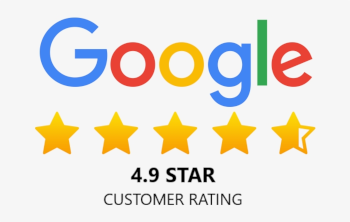Your next client often decides who to call based on Google Business reviews. When someone searches “family lawyer near me” and sees your firm with a handful of glowing reviews, they feel confident dialing your number. But if your profile shows zero or only a couple of stars, you lose that first impression, no matter how skilled you are in court.
Perfect Your Google Business Profile
Before you ask for any reviews, make sure your Google Business Profile (GBP) shines:
Claim and verify your listing. Google rewards verified businesses with more visibility.
Fill out every field. Include your exact address, phone number, website, business hours, and practice areas.
Add high-quality photos. Show your office, team headshots, and friendly meeting spaces.
Write a clear business description. In 750 characters or fewer, describe who you serve and how you help.
A complete, polished profile not only prompts more clicks, it encourages clients to share their experience once they’ve worked with you.
Deliver an Outstanding Client Experience
You can’t fake great reviews. Start by doing excellent work and guiding clients through your process:
Set clear expectations. Outline timelines and next steps at the kickoff meeting.
Communicate proactively. Send brief updates after every major milestone, no one likes radio silence.
Show empathy. Legal matters feel personal. Listen closely and respond with genuine care.
Celebrate small wins. When you file a document or negotiate a settlement, let clients know.
When clients feel informed, respected, and heard, they naturally want to help you out with a review.
Ask for Reviews at the Right Moment

Timing matters. You’ll get the best response when you ask right after a positive milestone:
After a successful hearing or settlement. Clients still feel relief and gratitude.
When you deliver a clear “win.” That could be approving a traffic ticket reduction or finalizing an estate plan.
At project completion. Once you wrap up the file, clients take a moment to reflect on their experience.
Always ask in person if possible. A simple, “I’m glad we got this result for you, would you mind sharing a quick review on Google so others can find us?” works wonders.
Simplify the Review Process
Make it dead easy for clients to leave feedback:
Create a direct link. In your browser, click “Get more reviews” in your GBP dashboard and copy the URL.
Include the link in emails. Add it to your thank-you emails, case-closed emails, or newsletter footers.
Use a QR code. Generate a QR code for that URL and display it on business cards, brochures, or your reception desk.
Provide step-by-step instructions. A quick screenshot guide helps less tech-savvy clients.
The fewer clicks and steps, the more reviews you’ll collect.
Leverage Multiple Channels to Ask
Don’t rely on just one channel. Mix and match:
In-person: At the end of a meeting, hand them a business card with the QR code.
Email: Send a personalized follow-up:
“Hi Sarah, I enjoyed working with you on your custody case. If you have a minute, I’d really appreciate your feedback on Google so other parents know where to turn.”
Text message: For clients who prefer SMS, text the review link with a friendly note.
Newsletter: Highlight a “Review of the Month” and invite subscribers to share their experiences.
Different clients use different channels, cover all your bases.
Respond to Every Review, Good and Bad

When someone takes the time to leave feedback, acknowledge it:
Thank positive reviewers by name. “Thanks, John! I’m glad we could resolve your dispute quickly.”
Address concerns in negative reviews. Apologize for their experience, offer to discuss details offline, and show you care.
Keep responses concise and courteous. Prospective clients read these replies too.
Active engagement shows future clients you value feedback and take every case seriously.
Encourage a Culture of Reviews in Your Team
Make reviews part of your firm’s routine:
Train staff. Teach receptionists and paralegals to mention reviews at check-out.
Share metrics at meetings. Celebrate hitting review milestones, e.g., “We hit 25 reviews this month!”
Create friendly contests. Which attorney gets the most reviews in a quarter? Offer a small prize or lunch.
A team that rallies around reviews boosts both morale and your online reputation.
Handle Negative Feedback with Grace
You can’t eliminate every critical comment, but you can turn negatives into a positive signal:
Stay calm. Never write in anger.
Acknowledge the issue. “I’m sorry to hear about your experience.”
Offer to make it right. “Please call me at [number] so we can address your concerns.”
Take the conversation offline. Once resolved, ask if they’ll consider updating their review.
Prospective clients notice how you handle challenges, strong, empathetic responses build trust.
Track Your Progress and Optimize

You’ve asked for reviews and watched them roll in. Now treat that momentum like a living part of your marketing, measure it, learn from it, and tweak your tactics month after month. Here’s how to dig deeper into each metric and turn data into action.
Set Clear, Achievable Targets
Don’t leave “more reviews” to chance. Sit down at the start of each month and decide exactly how many new five-star reviews you want. Maybe your firm aims for ten this month and twelve next month. Break that goal into weekly checkpoints, two to three reviews per week. Record those targets in a shared spreadsheet or your firm’s dashboard so everyone sees progress in real time. When you hit or miss a checkpoint, you’ll know immediately, and you can celebrate wins or course-correct fast.
Watch Your Star Rating Like a Hawk
Your average star rating carries more weight than raw review count. A jump from 4.2 to 4.5 signals better service, while a drop to 4.0 raises red flags. Log your average rating at the end of every week, and plot it on a simple line chart. If it dips, review the recent feedback to spot any recurring complaints. Often, you’ll catch small issues, like slow email responses or billing misunderstandings, before they spiral into bigger problems.
Mine Your Reviews for Gold
Every review packs insights beyond the stars. Create two or three categories, like “Communication,” “Outcome,” and “Responsiveness”, and tag each new review accordingly. Over time, you’ll see which categories shine and which need work. If ten clients this month rave about how clear your explanations were, feature that quote on your homepage or in your next email newsletter. If several mention long hold times, brainstorm ways to streamline your intake process and then ask future clients if they notice the improvement.
Pivot Tactics Based on Real Results
Not every channel will perform equally. Maybe email requests net you eight reviews a month, while follow-up texts bring in only two. Use your tracking spreadsheet to compare channels side by side. Then shift your effort, spend more time crafting personal email templates, or train your front-desk team to ask in person after closing each file. Test one change at a time, track the outcome for two to four weeks, and lock in the approaches that consistently hit your weekly targets.
Hold Monthly “Review Retrospectives”
At month’s end, gather your team, lawyers, paralegals, and staff, and run a quick 15-minute retro. Look at your chart: did you meet your review goal? Did your average rating climb? Which themes popped up in feedback? Celebrate the successes, acknowledge where you fell short, and assign one or two action items for next month. By embedding this regular, structured review process into your routine, you’ll keep your Google Business reviews growing, and your entire client experience evolving, for the long haul.
Building a robust collection of Google Business reviews doesn’t require gimmicks or paid schemes. It starts with doing great work, asking genuinely, and making it easy for clients to share their experiences. When you perfect your profile, deliver top-notch service, and follow the simple steps above, your five-star reputation will grow, and with it, the steady flow of new clients.

